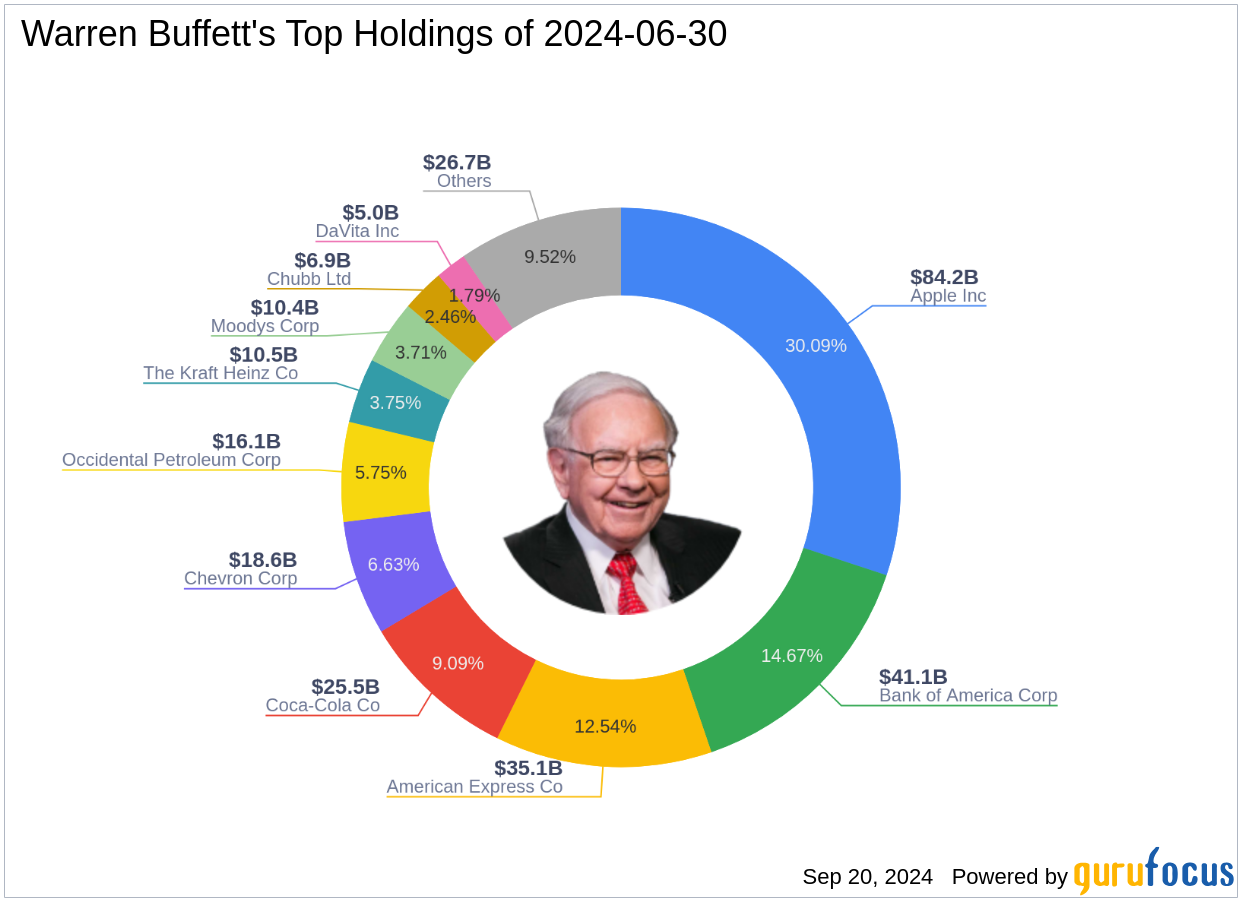
On September 19, 2024, ( , )'s firm made a notable adjustment in its investment portfolio by reducing its stake in Bank of America Corp ( ). This transaction involved the sale of 22,272,071 shares at a price of $40.23 each.
Following this move, the firm still holds a substantial number of shares, totaling 835,908,435, which represents a 10.77% ownership in the company. This adjustment has led to a slight decrease in the portfolio's exposure to Bank of America, now accounting for 12.

05% of the total holdings. Profile of ( , ) ( , ), often referred to as "The Oracle of Omaha," is a towering figure in the investment world. As the chairman of Berkshire Hathaway, Buffett has transformed a modest textile company into a major conglomerate, primarily focusing on insurance and other diverse investments.
Buffett's investment philosophy, deeply influenced by Benjamin Graham, emphasizes understanding a business's fundamentals, long-term prospects, and management quality, while insisting on a significant margin of safety. Berkshire Hathaway's top holdings include major names like Apple Inc ( ) and American Express Co ( ), reflecting a strong inclination towards financially sound companies. Details of the Trade The recent transaction marks a reduction of 2.
60% in Buffett's holdings of Bank of America shares, impacting the portfolio by -0.32%. Despite this sale, Bank of America remains a significant component of Berkshire Hathaway's investment portfolio, underscoring the firm's ongoing confidence in the bank's value and stability.
Bank of America at a Glance Bank of America is one of the leading financial institutions in the United States, with operations spanning across consumer banking, global wealth management, and investment banking. As of the latest data, the company boasts a market capitalization of $317.13 billion and a stock price of $40.
87, slightly above the GF Value of $38.45, indicating the stock is fairly valued. The bank's diverse business operations and substantial market presence make it a significant player in the financial sector.
Financial Performance and Market Position Bank of America's stock has shown a year-to-date increase of 20.56%, with a substantial growth of 818.43% since its IPO in 1973.
The bank maintains a of 82/100, indicating good potential for future performance. The stock's profitability and growth ranks are commendable, reflecting its solid market standing and business model efficacy. Comparative Industry Analysis Within the banking industry, Bank of America stands out due to its comprehensive service range and substantial asset base.
The financial services sector, being Buffett's top investment sector, shows his strategic focus on this area, with technology also playing a significant role in his portfolio choices. Insights from Other Major Investors Other notable investors in Bank of America include Dodge & Cox, ( , ), and ( , ). Each brings a unique investment strategy to the table, although like Buffett, they all recognize the intrinsic value and stability offered by Bank of America.
Conclusion ( , )'s recent reduction in Bank of America shares reflects a strategic portfolio adjustment rather than a shift in long-term confidence. For value investors and market watchers, this move highlights the importance of portfolio rebalancing and risk management, even when dealing with large, stable entities like Bank of America. As the market evolves, so too does the approach of seasoned investors like Buffett, whose actions continue to offer valuable lessons in financial prudence and strategic investment.
This article first appeared on ..












